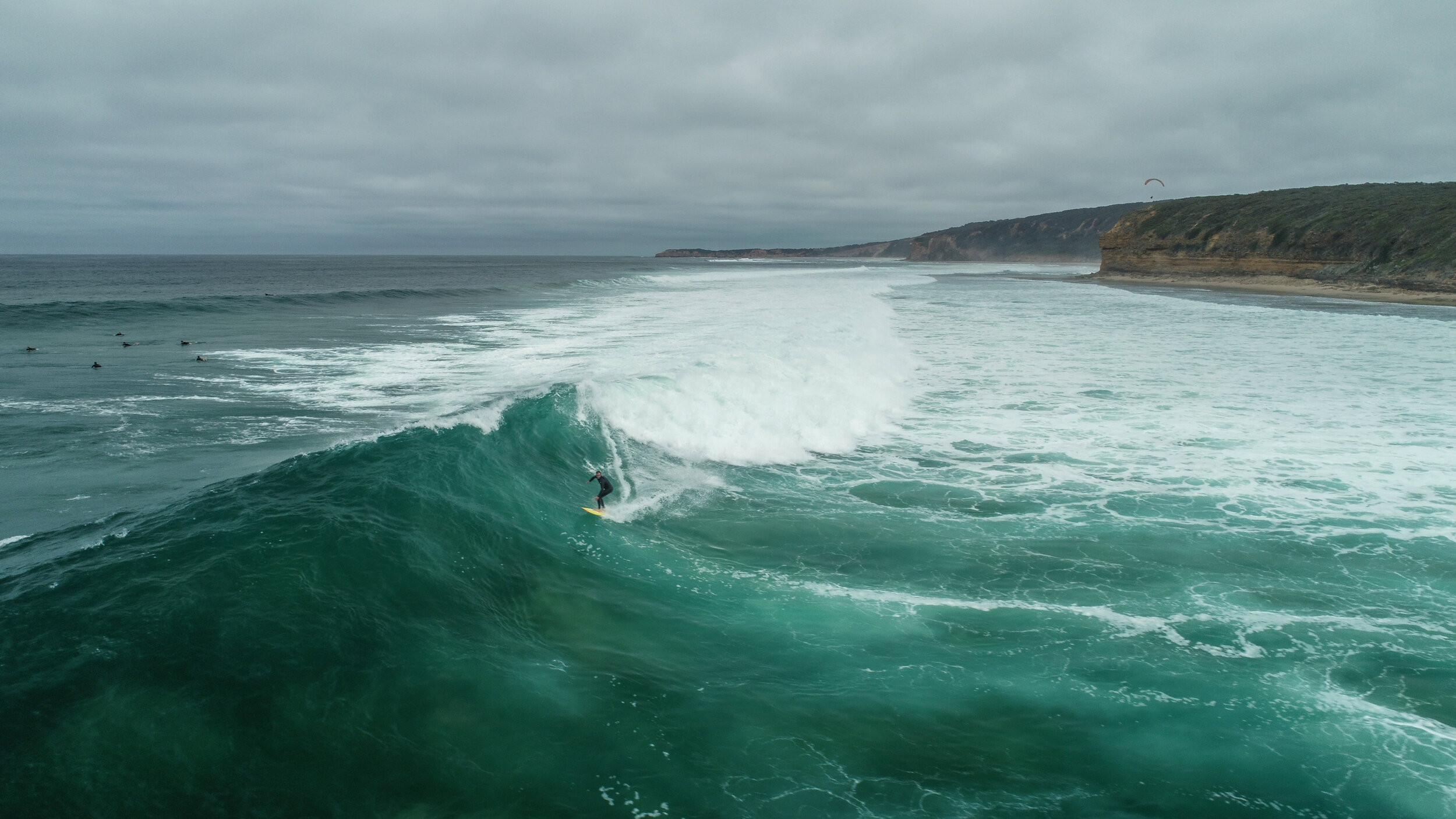Article by Thomas Lachlan Mayo
Bottlenose Dolphin
The Common Bottlenose Dolphin (Tursiops truncatus) is one of our oceans most iconic and well-known species. They are found globally in temperate and tropical waters across the Atlantic, Pacific, and Indian Oceans, as well as in the Mediterranean and Black Seas. They inhabit a wider range of habitats than any other marine mammal, including, harbors, bays, estuaries, nearshore coastal waters, and offshore along the continental shelf into the open ocean.
They get their name from their bottle-shaped snout (rostrum) and are primarily grey, fading into an off-white colour along their bellies. These intelligent and playful creatures are frequently admired by coastal onlookers as they frolic close to shore, catch waves with surfers, and ride the bow waves of passing boats.
Complex Communicators
Bottlenose dolphins are renowned for their intelligence and social behaviour, typically living in pods of hundreds of individuals. They commonly form complex social arrangements and have developed sophisticated methods of both verbal and nonverbal communication. While they often use physical gestures, they primarily utilise a variety of whistles, clicks, and squeaks to communicate, with each individual having their own unique sound (much like a name). Their preference for sound is likely due to the variability of water clarity and the efficiency that sound travels through water - up to five times faster than through air.
Nowhere to Hide
Like all toothed whale species, dolphins use echolocation to navigate and locate their prey. By emitting a beam of high frequency clicking sounds (up to 600 clicks per second) and waiting for the echoes to return from surrounding objects, they can determine the distance and size of their surrounds. Research suggests that dolphins can detect objects as small as a golf ball from up to 100 meters away, leaving little place to for prey species such as invertebrates, molluscs, and fish to hide from a pod of hungry dolphins.
Clever Hunters
In addition to their impressive prey-locating abilities, Bottlenose Dolphins are very clever hunters. They are among the few animals documented to use tools while foraging for food. Researchers in Shark Bay, Western Australia, have observed dolphins ripping basket sponges from the seabed and fitting them over their rostrum to protect themselves from rocks, coral, shells, and stingray barbs as they forage for fish anxiously hiding within the sand of the sea floor.
They are also frequently observed hunting cooperatively in groups, trapping schools of fish or squid by surrounding them or herding them against sandbars and sea walls, then taking turns plunging into the middle to feed. They have even been seen swimming together to create a large enough bow wave to wash fish onto the shore, where they then momentarily beach themselves to feed on the stranded prey.
Human Interactions
As inquisitive and playful creatures, Bottlenose Dolphins often interact with humans. Many ocean-goers have created fond memories of encounters with wild dolphin populations, where there seems to be a mutual recognition of intelligence. These interactions have even involved dolphins assisting drowning humans, protecting them from shark attacks, or helping local fishermen herd fish in exchange for a share of the catch. In relation to this extraordinary connection between species, it is important to understand that most dolphins face threats from habitat destruction, commercial fishing by-catch, pollution, and other human activities. Ocean-goers should try to maintain a respectful distance, particularly when operating a marine vessel to avoid collisions. Bottlenose dolphins, like all dolphin species, play a crucial role in maintaining the balance of marine environments and by protecting them, we can help safeguard important ocean ecosystems for future generations to enjoy.
FAST FACTS
Age: 40 – 60 years
Size: Average 300 kg in weight, up to 4 meters in length
Breeding: Juveniles stay with their mothers for up to 4 years
Speed: Can swim at speeds of up to 35 km/h
Natural predators: Great White, Tiger and Bull Sharks as well as Orcas
Sleep: Can sleep with half of their brain, so they can keep swimming, breathing, and stay aware to predators.
Intelligence: Can problem solve, use tools, and recognise themselves in mirrors







